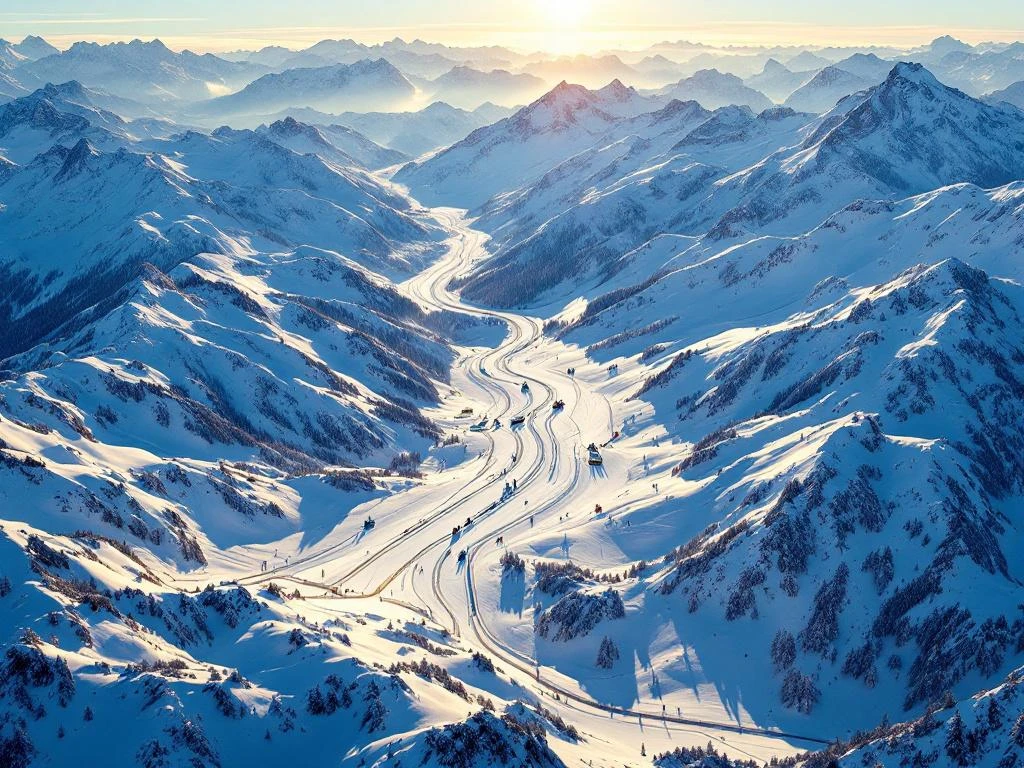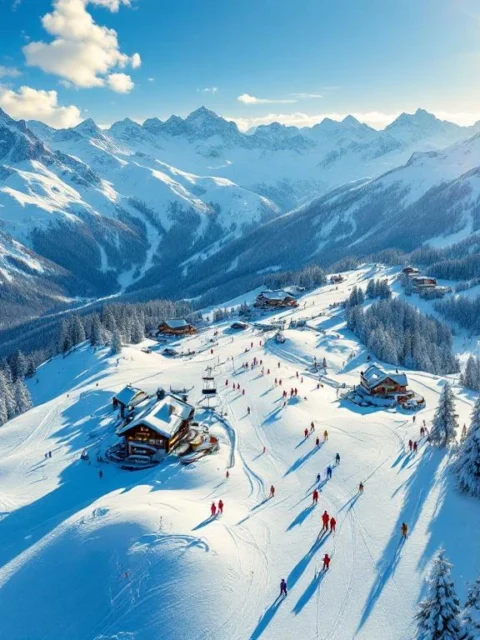Where are the best ski resorts in France?

France offers the best ski areas in the world with more than 400 ski resorts spread across the French Alps. From gigantic ski areas like Les Trois Vallées to charming family resorts, France has something to offer every winter sports enthusiast. The combination of excellent snow conditions, modern lift facilities and legendary après-ski make French ski areas the perfect choice for your next ski vacation.
The Ultimate Guide to French Ski Areas
France is undoubtedly the top destination for winter sports in Europe. With its impressive mountain ranges, reliable snowfall and world-class facilities, the country attracts millions of powder-spotting enthusiasts annually.
The French Alps offer an unparalleled diversity of ski areas. Whether you’re an absolute beginner wanting to learn your first turns, or an experienced freerider looking for challenging off-piste routes, French ski resorts have everything your heart desires.
This complete guide takes you through the highlights of French winter sports. You’ll discover which areas best suit your level, what the largest ski areas have to offer, and how to make the perfect choice for your next ski adventure in the French Alps.
Which Are the Largest Ski Areas in France?
Les Trois Vallées is the largest ski area in the world with more than 600 kilometers of pistes. This enormous area includes famous resorts like Courchevel, Méribel and Val Thorens, connected by an extensive network of modern lifts.
Paradiski ranks second with 425 kilometers of ski area, consisting of La Plagne and Les Arcs. These two areas are connected by the spectacular Vanoise Express cable car, which transports you across the valley in just four minutes.
Espace Killy, the home area of Val d’Isère and Tignes, offers 300 kilometers of pistes at altitudes up to 3,500 meters. This area is known for its excellent snow conditions and long season, often from November to May.
| Ski Area | Kilometers of Pistes | Number of Lifts | Altitude Range |
|---|---|---|---|
| Les Trois Vallées | 600 km | 183 | 1,260-3,230m |
| Paradiski | 425 km | 142 | 1,200-3,250m |
| Espace Killy | 300 km | 97 | 1,550-3,500m |
What Are the Best Ski Areas for Beginners in France?
La Plagne is an ideal choice for beginning skiers with its extensive network of wide, blue pistes. The area offers excellent ski schools and beginner-friendly facilities, perfect for taking your first steps on skis.
Les Gets charms beginners with its cozy village atmosphere and accessible pistes. This family-friendly resort in the Portes du Soleil area has a good reputation for quality ski instruction and safe learning environments.
Alpe d’Huez is known for its sunny location and wide, clear pistes. The many blue runs make it a perfect place to build confidence, while the resort simultaneously offers challenging possibilities for when you’re ready for the next step.
When choosing ski lessons, you can easily compare different ski schools through our platform to find the perfect instructor that matches your level and learning style.
Where Do You Find the Best Off-Piste Opportunities in France?
Chamonix is the absolute mecca for off-piste skiers and freeriders. This legendary valley offers extreme challenges like the famous Vallée Blanche and steep couloirs that are only accessible to very experienced skiers.
La Grave is known as one of the most challenging ski areas in the world. With its steep slopes and varied terrain, it attracts daredevils looking for the ultimate adrenaline rush.
Val d’Isère combines excellent off-piste opportunities with modern facilities. The area offers both accessible powder snow runs and challenging routes for experts.
Safety tips for off-piste skiing:
- Never go off-piste alone, always ski with experienced partners
- Always carry avalanche equipment (beacon, probe, shovel)
- Check the daily avalanche danger report
- Consider hiring a local guide for unfamiliar terrain
How Do You Choose the Right French Ski Area for Your Vacation?
Choosing the perfect French ski area depends on various personal factors. Your level, budget, travel companions and preferences determine which resort suits you best.
For beginners, areas like La Plagne or Les Gets are ideal because of their many blue pistes and excellent ski schools. Advanced skiers are better off choosing challenging areas like Val d’Isère or Chamonix.
Budget also plays an important role. Large, famous resorts like Courchevel are more expensive than smaller, family-friendly areas. Also consider accommodation costs, lift passes and the prices of food and drinks.
Travel distance from the Netherlands varies by area. Areas in the northern French Alps like Chamonix are more quickly accessible than southern resorts. For families with children, a shorter travel time may be preferable.
Après-ski lovers should choose lively resorts like Val d’Isère or Méribel, while those seeking peace are better off in smaller, traditional villages.
Your Perfect French Ski Adventure Starts Here
France offers unparalleled opportunities for every type of winter sports enthusiast. Whether you dream of your first descent on wide blue pistes, seek challenging off-piste adventures, or simply want to enjoy the legendary French après-ski, there’s always a perfect French ski area for you.
The choice between the largest areas like Les Trois Vallées, beginner-friendly resorts like La Plagne, or extreme challenges in Chamonix depends entirely on your personal preferences and level.
Want to get the maximum out of your French ski vacation? Then professional ski instruction is indispensable. Through our platform you can easily compare and book quality ski lessons with more than 250 partners throughout the Alps, ensuring you’re guaranteed quality guidance that perfectly matches your level and ambitions.


